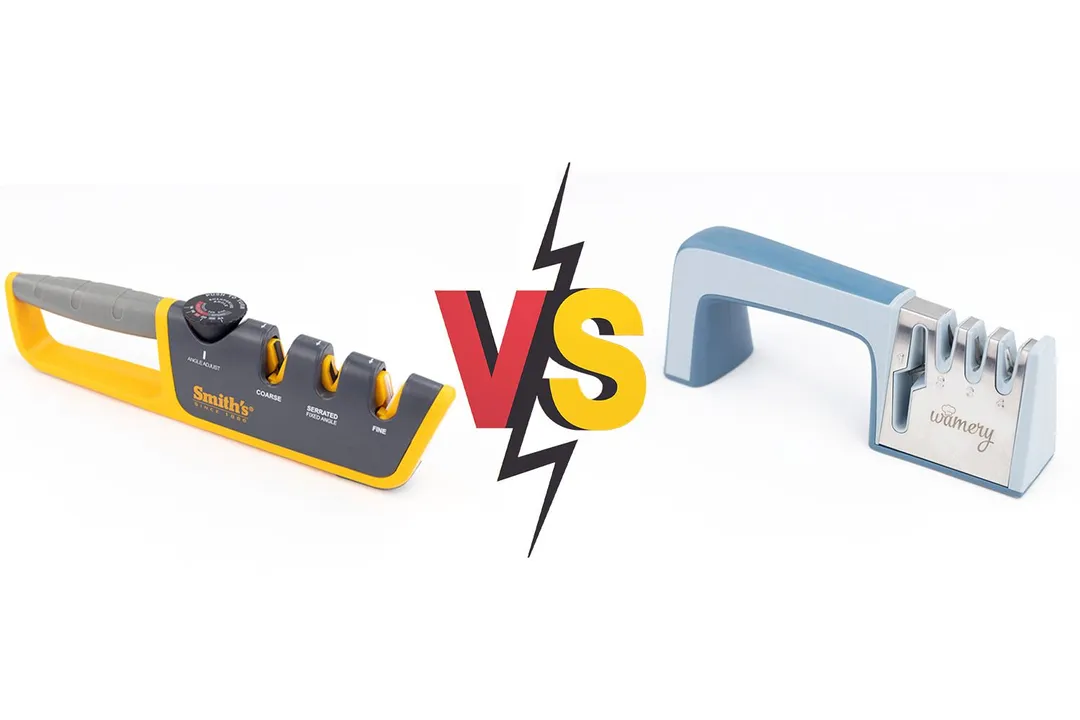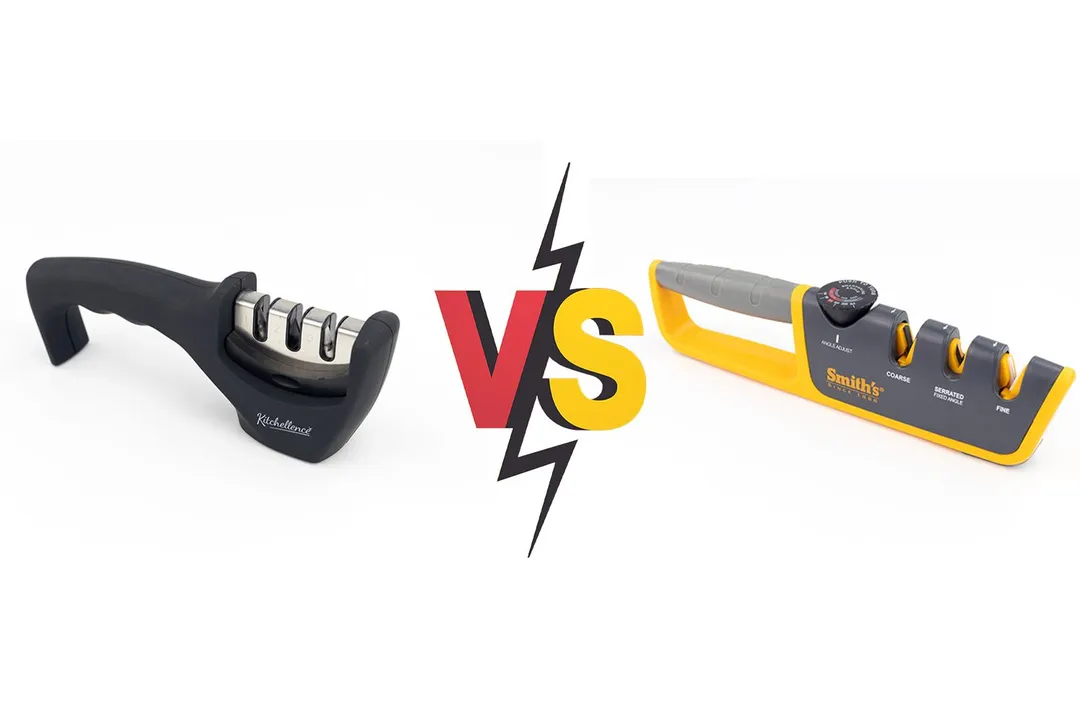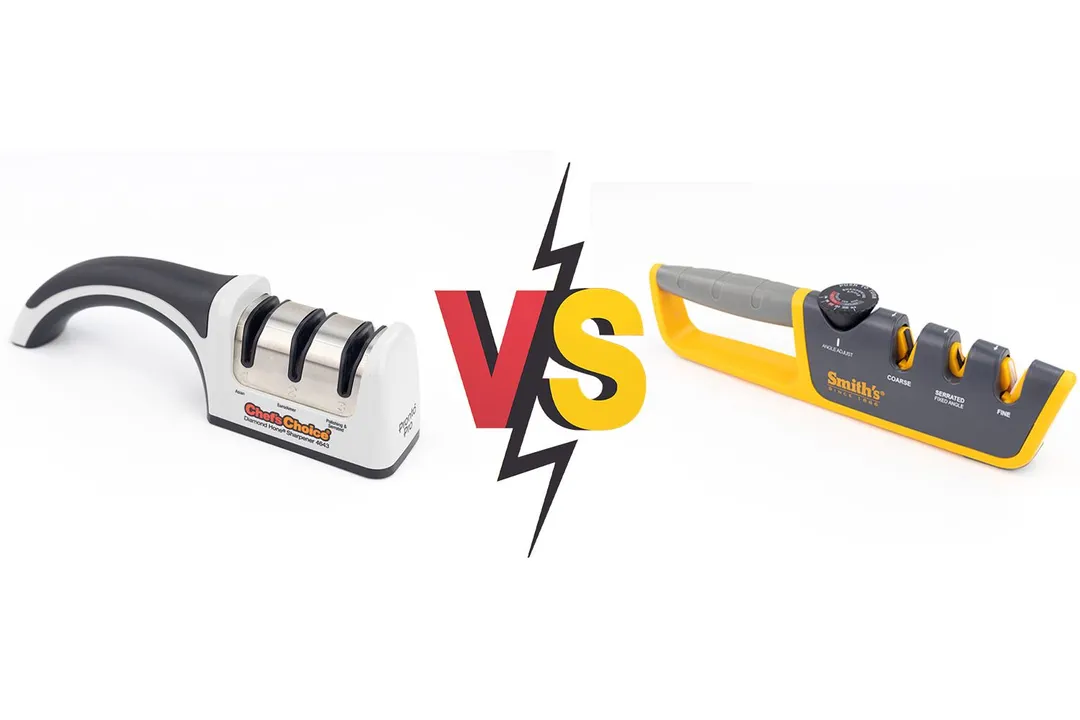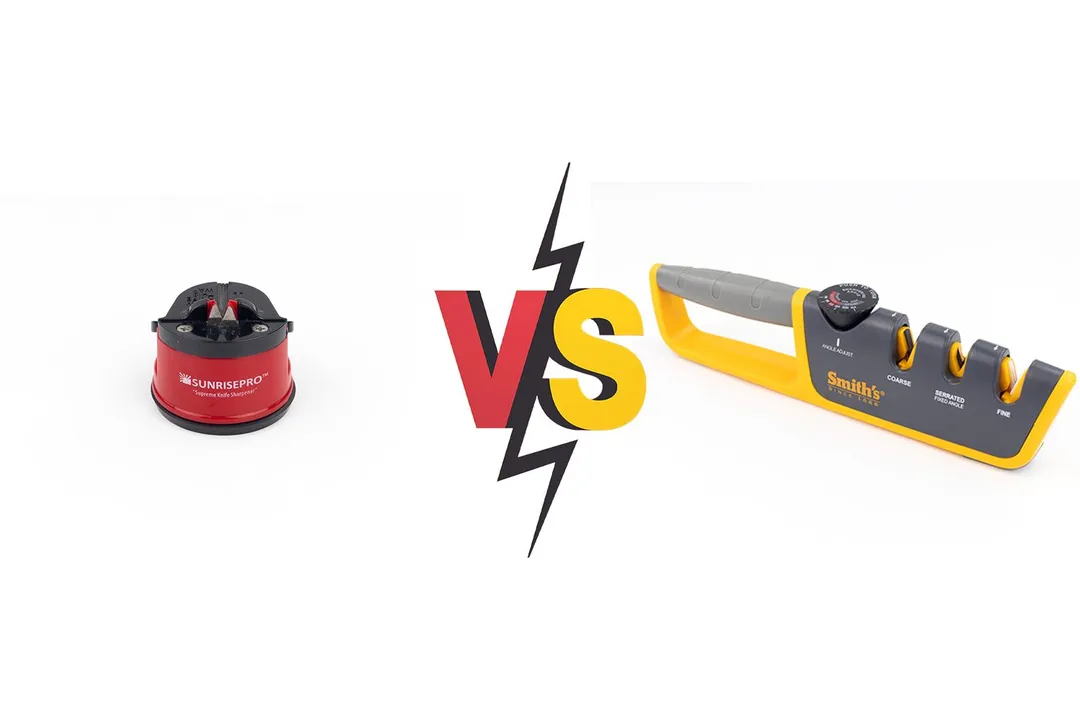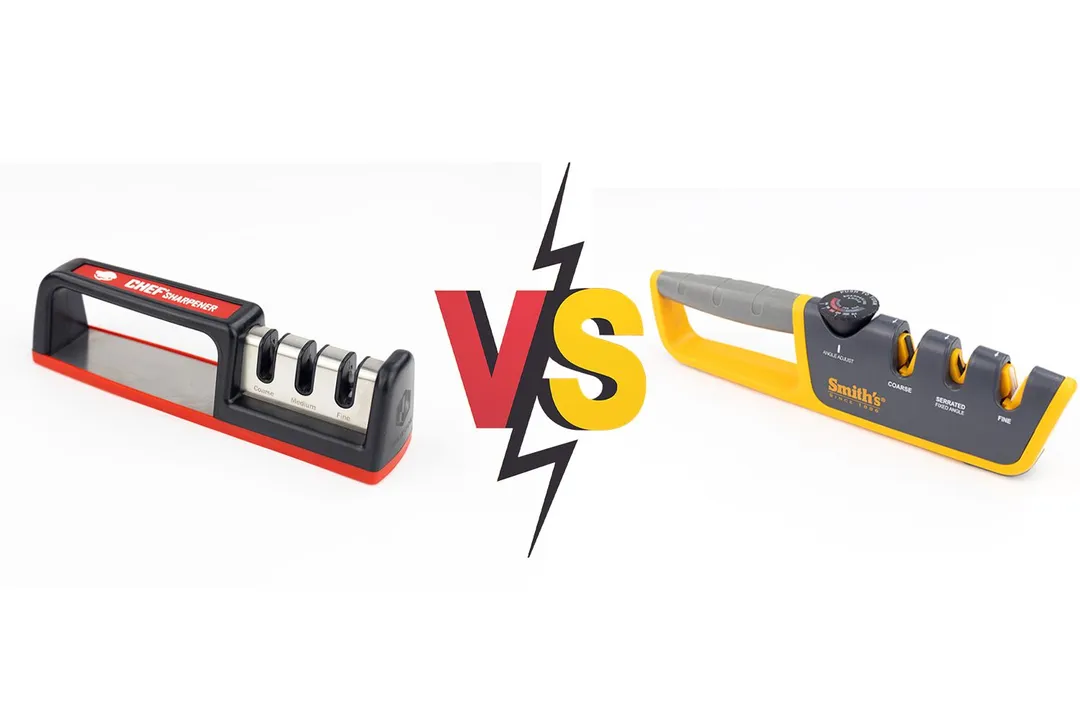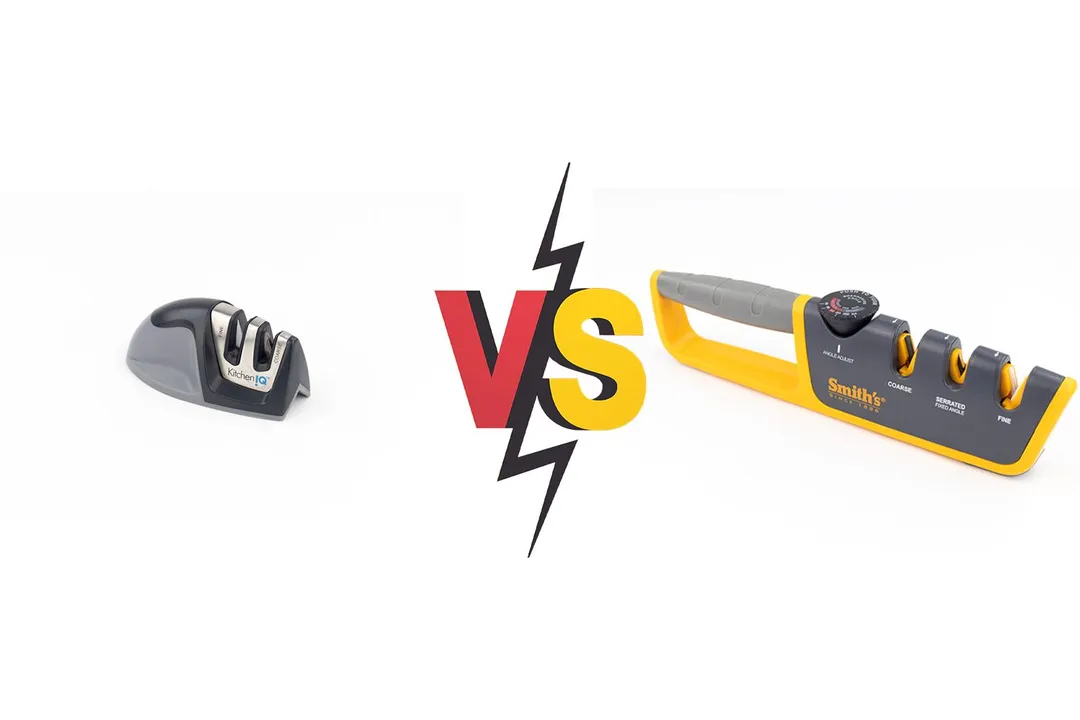Our recommendations are made independently through Research & Testing. We may receive commissions from purchases made via our links.
Smith's 50264 vs Mueller 4-Stage Manual Sharpener Side-by-Side Comparison
Smith's 50264 Adjustable vs. Mueller 4-stage manual sharpener. Check how fast, effective, and user-friendly they are compared to one another.
Smith's Adjustable
Tested Using Methodology v1.1Mueller 4-Stage
Tested Using Methodology v1.1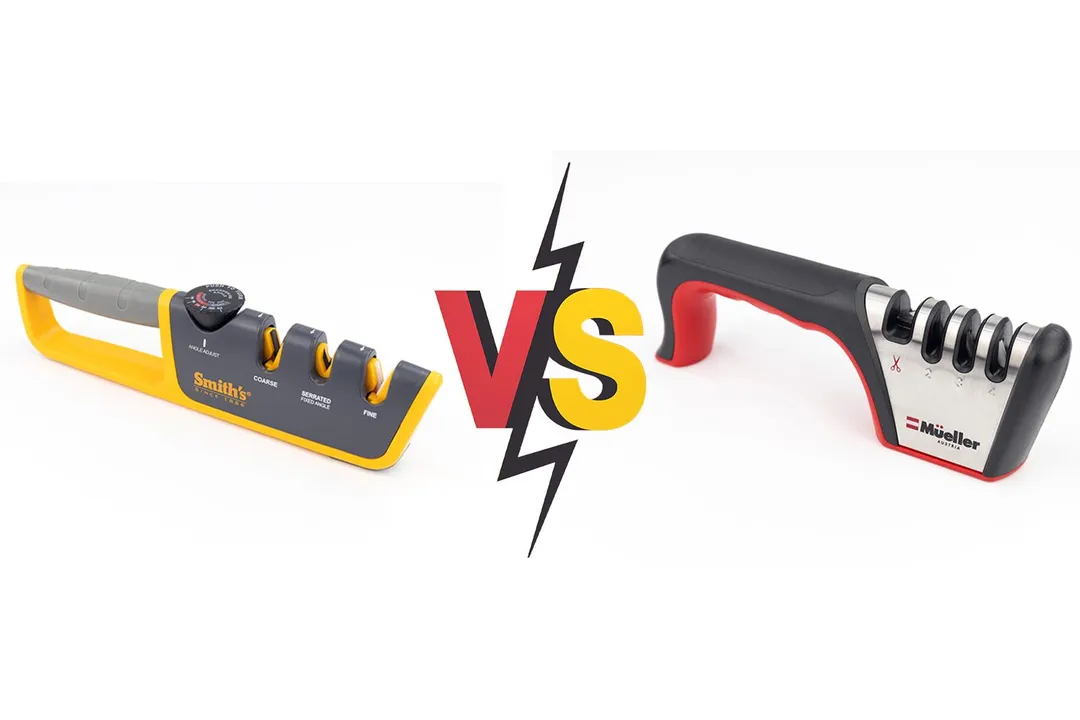
Overall Verdict
The Mueller isn’t a perfect manual sharpener, but it certainly has an edge over the Smith’s 50264.
Both devices are fast and effective, with the Mueller leading the speed test by about 10 seconds. The Mueller was also more forgiving of the knife’s edge, though admittedly only because the Smith’s was the most detrimental of all the pull-through devices we’ve tested to date, scoring low in both material retention and edge smoothness.
The Smith’s is more versatile in terms of edge angle. However, this is also where its Achilles’ heel lies: It sacrifices sturdiness for adjustability. The sharpener also sports a very narrow base, which further limits its ability to stay firm and balanced during sharpening.
The Mueller does suffer from a working section that’s placed a bit too far above its base, but its base size was enough to ensure decent stability. Overall, it’s the safer and easier sharpener to work with.
Pros & Cons
- Angle-adjustable sharpening
- Sharpening slot for serrated blades included
- Wide slot inserts
- Replaceable abrasives (sold separately)
- Strong construction, pretty coloring
- Quick sharpening
- Scissor slot
- Ease of use
- Shears off a considerable amount of metal
- Awkward slot structure
- Long, narrow base
- High center of gravity
- Harsh on the knife edge
Key Specs
Where to Buy
*You help support HealthyKitchen101's product testing and reviews by purchasing from our retail partners.
Analysis and Test Results
Performance
Sharpening Time to Cut a Lemon
Material Retention
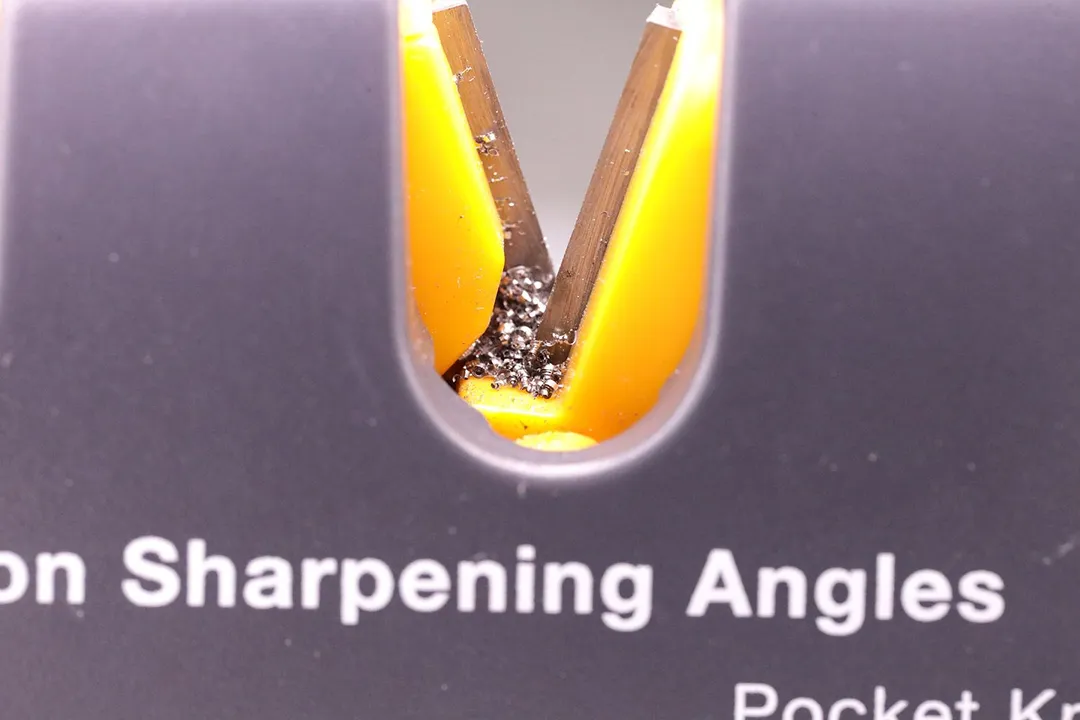

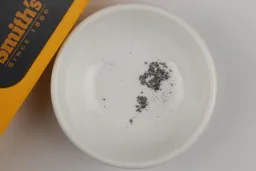


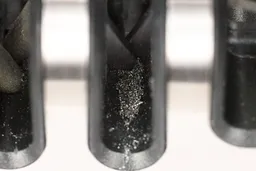
Maximum Sharpness Achieved
Edge Smoothness


Design
In the Box
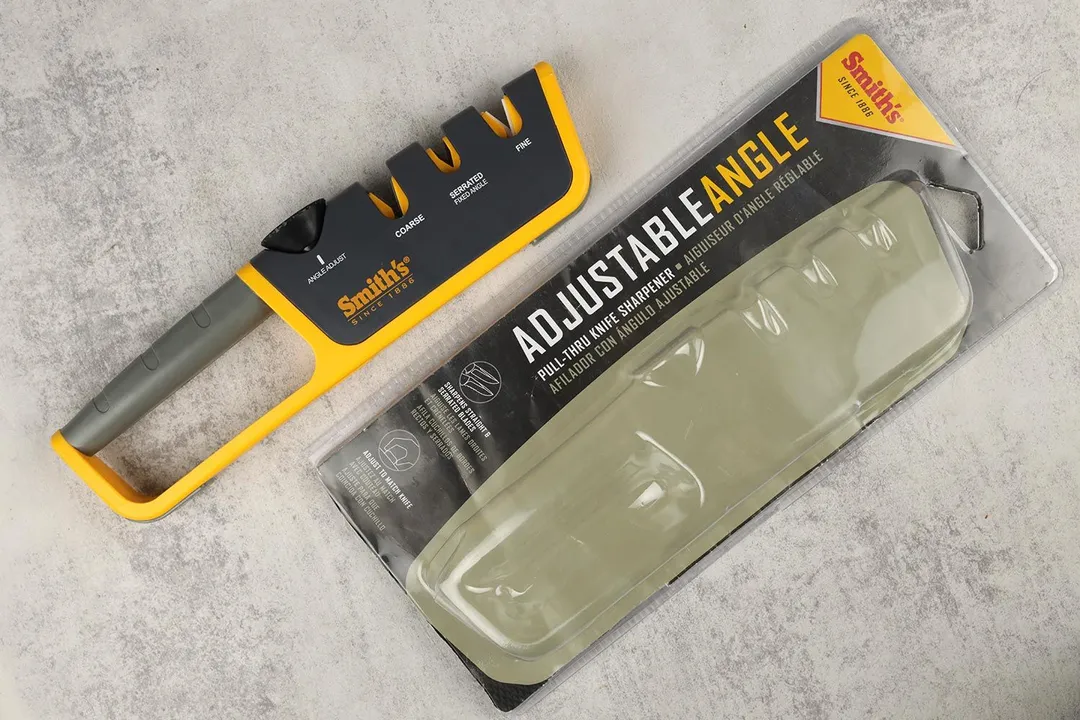
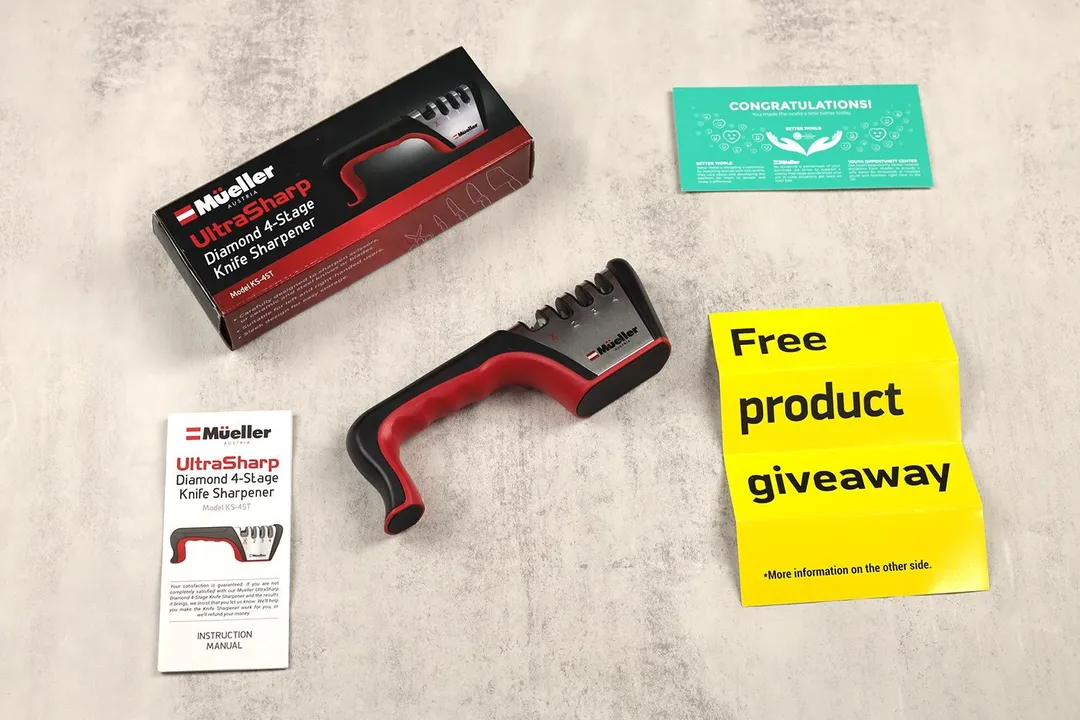
Dimensions
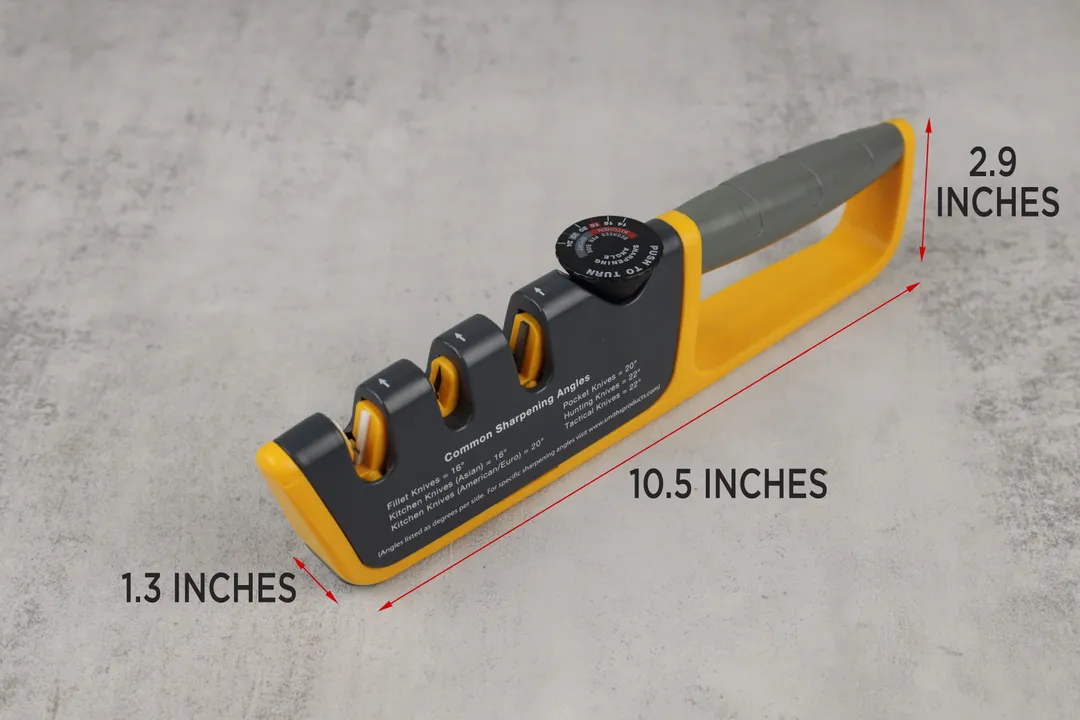
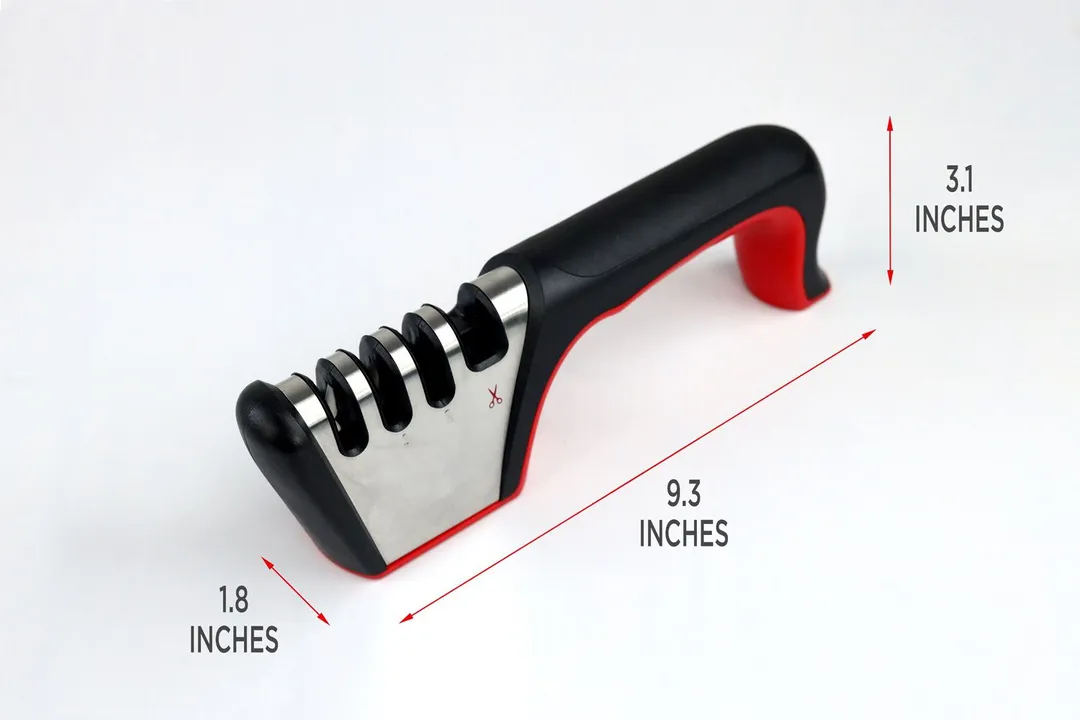
Build Quality
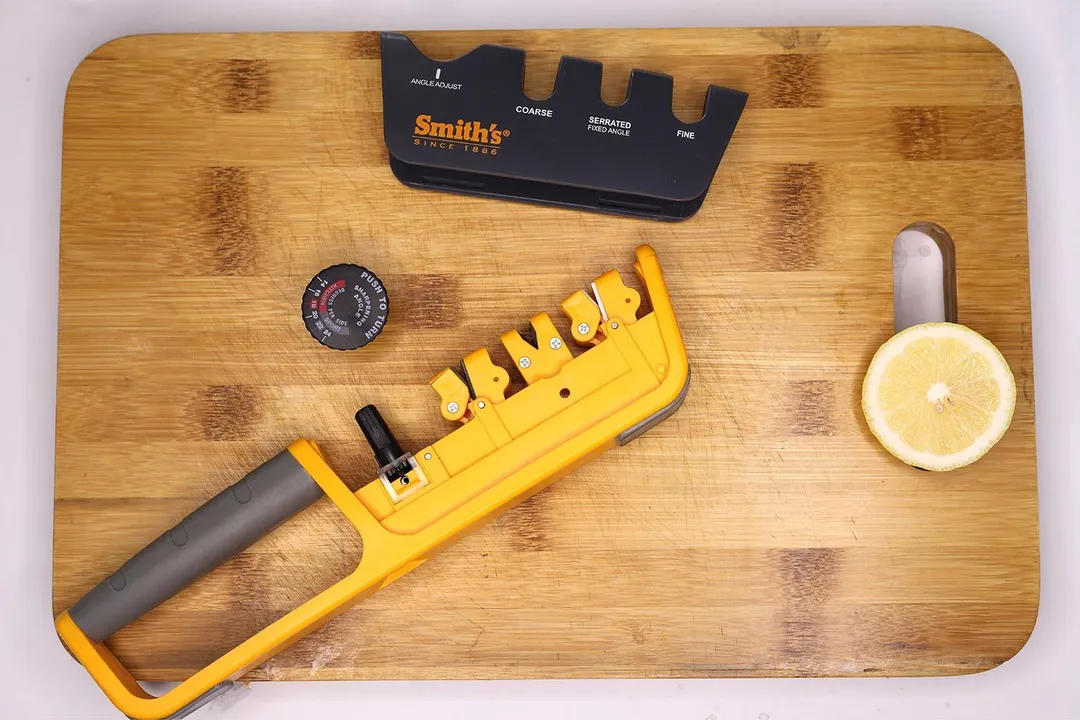
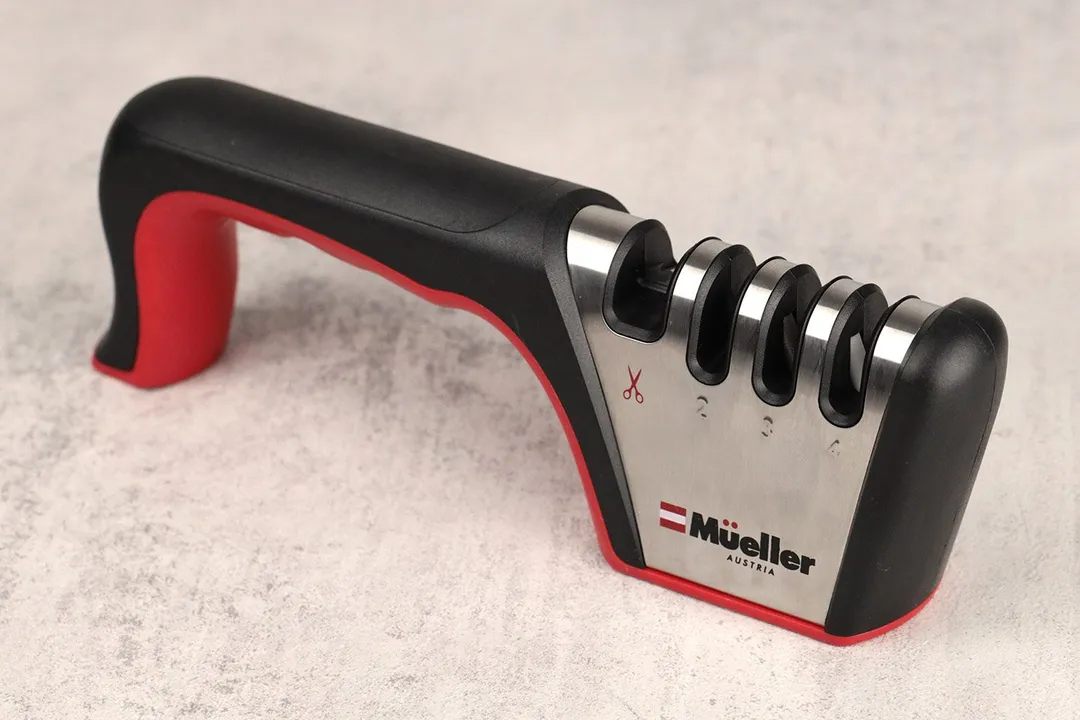
Working Section
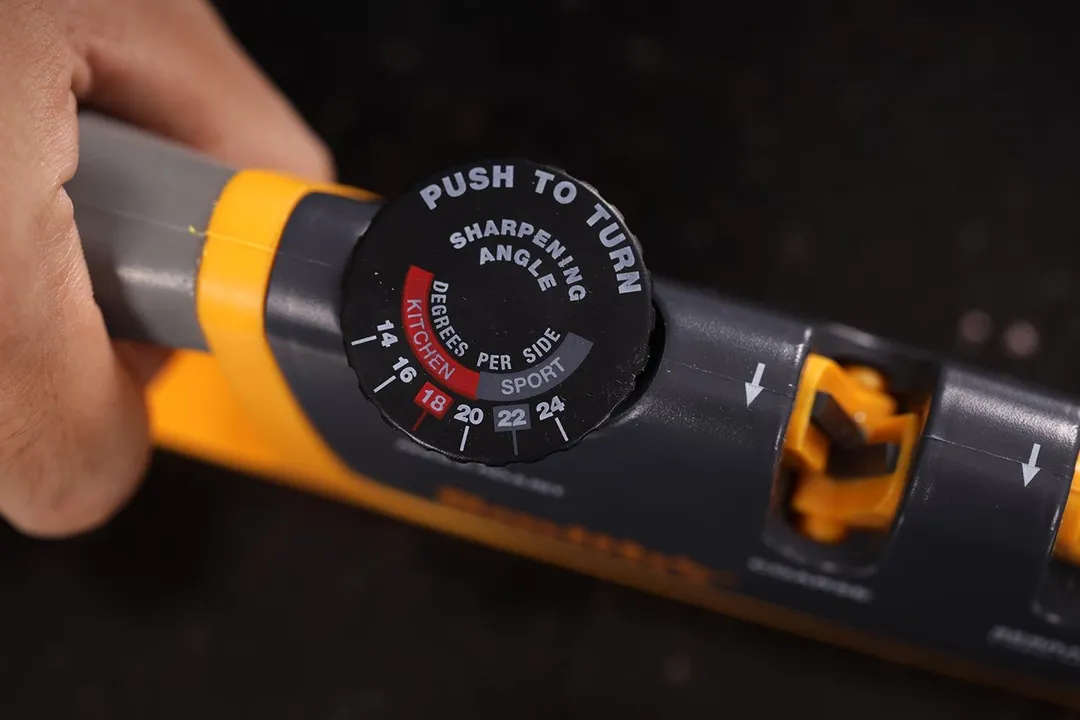
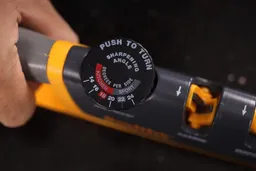

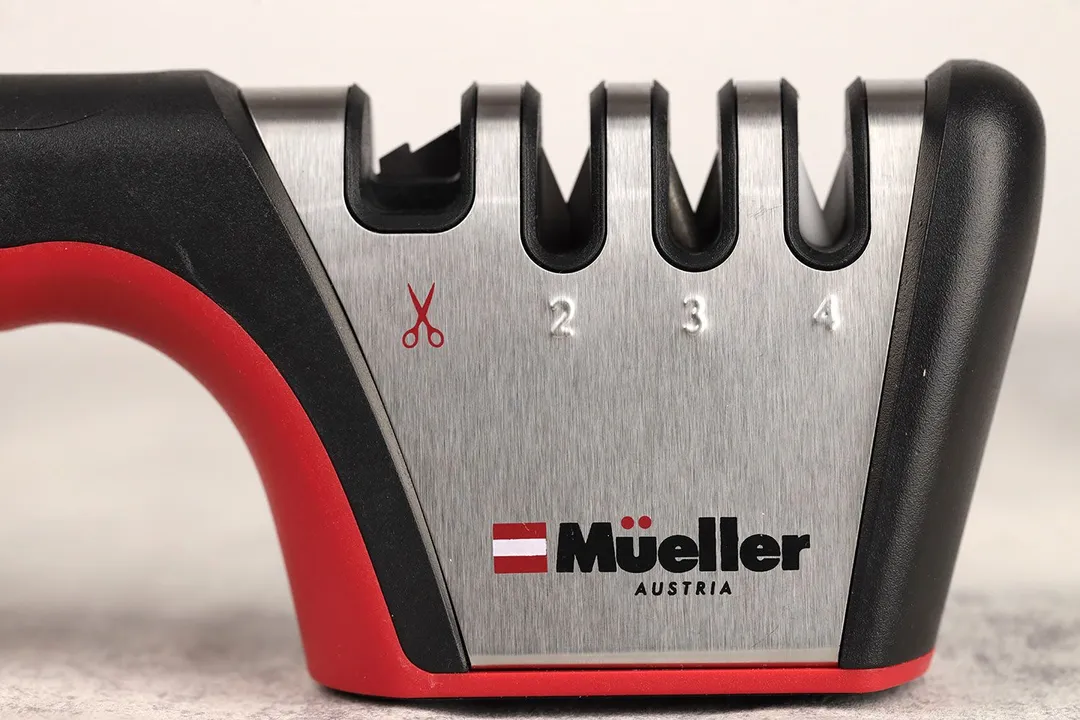
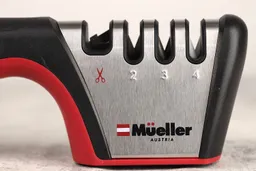
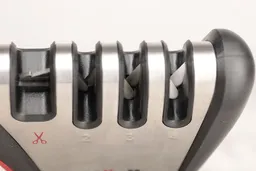
Base
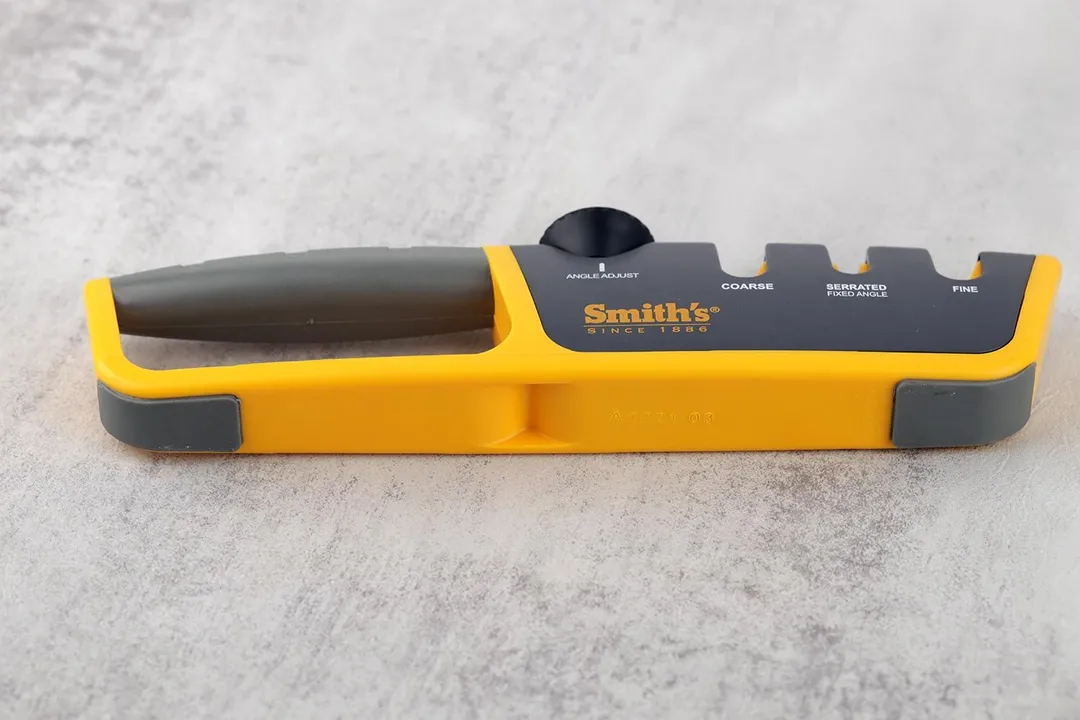
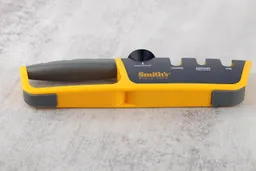


Grip
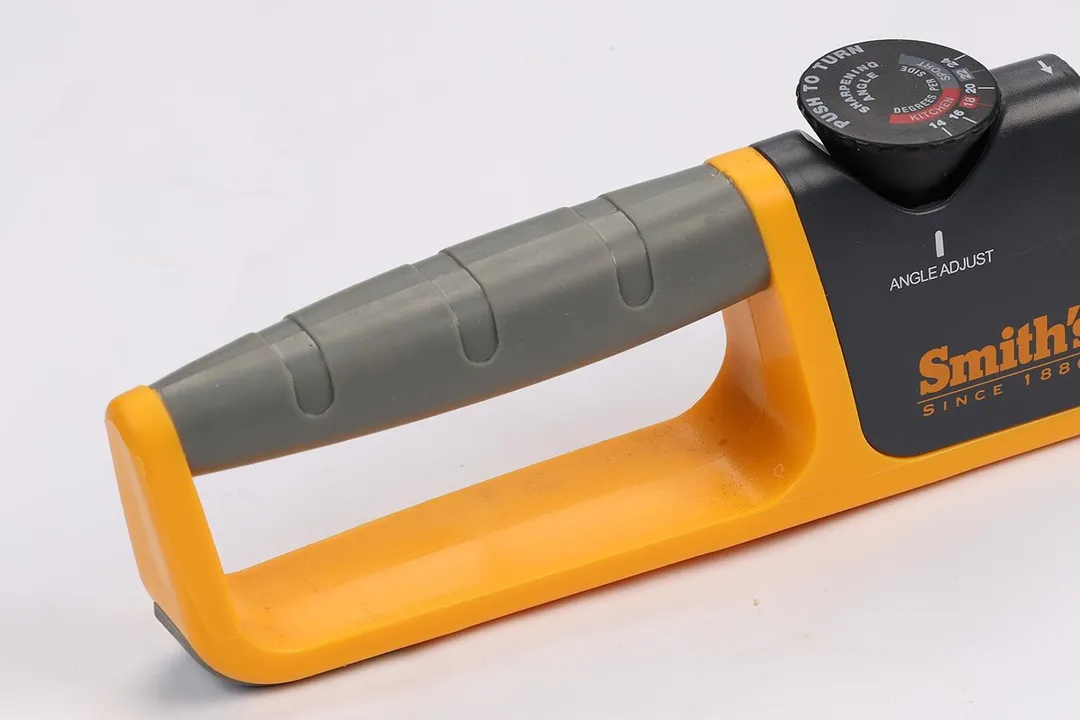
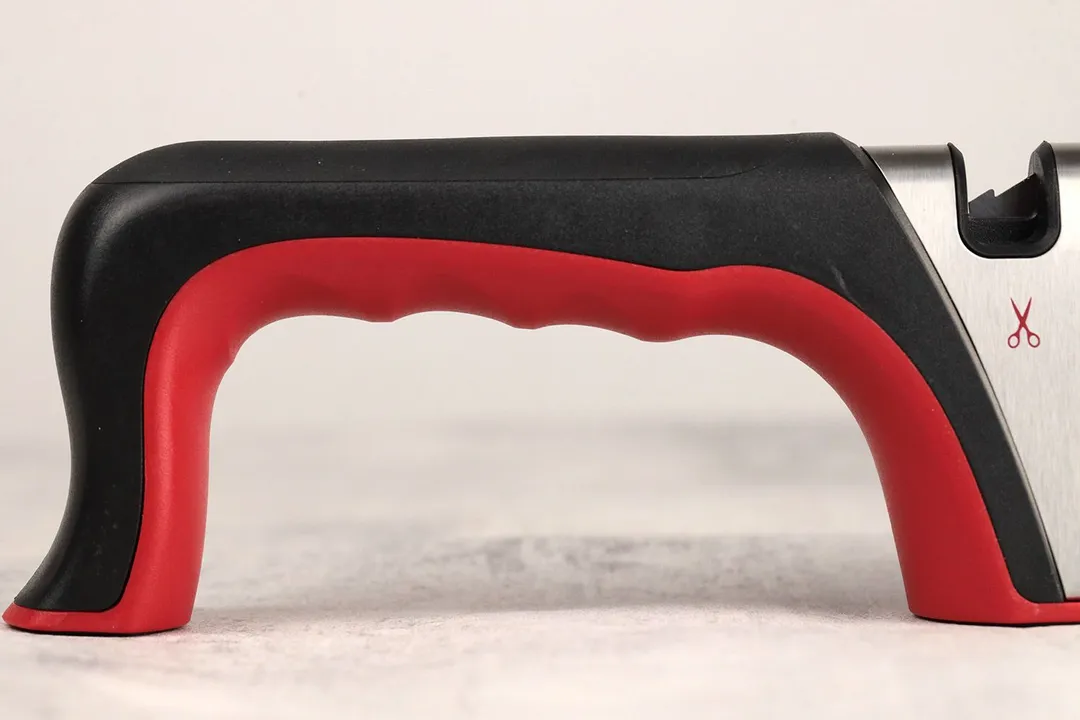
Usability
Slot Arrangement
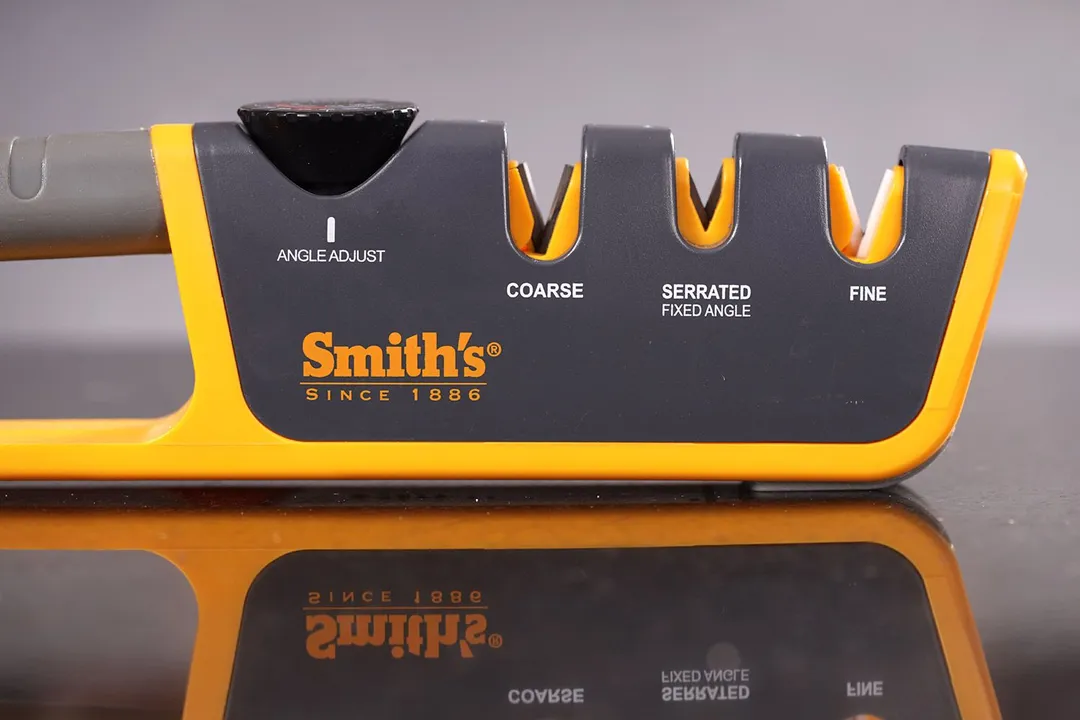
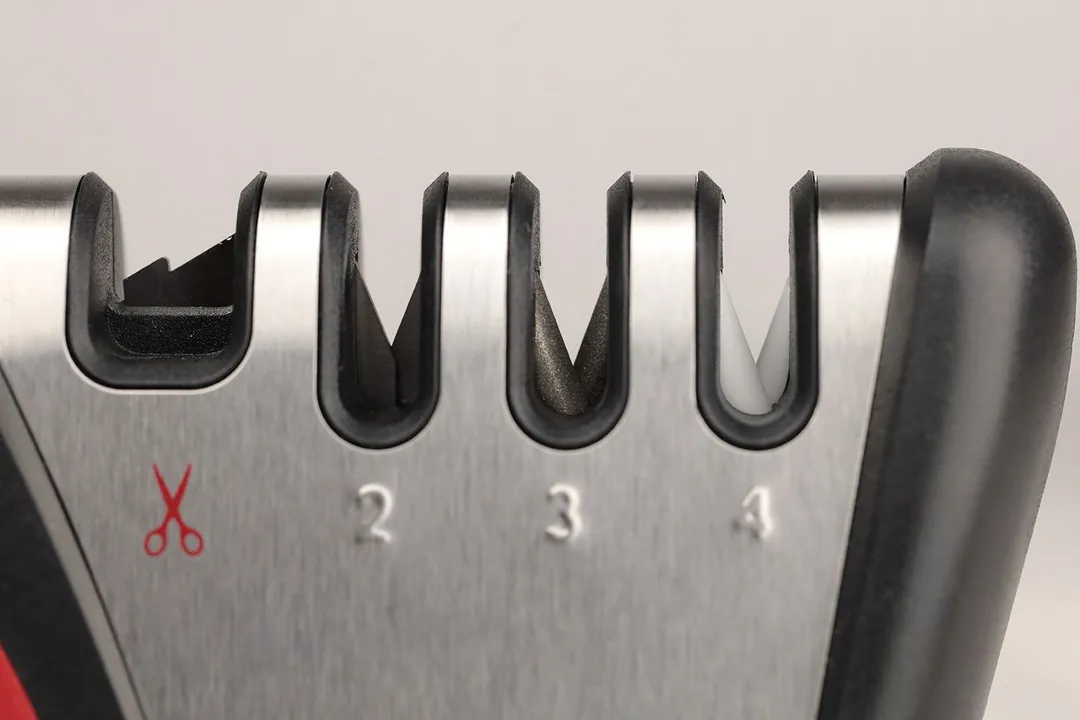
Insertion
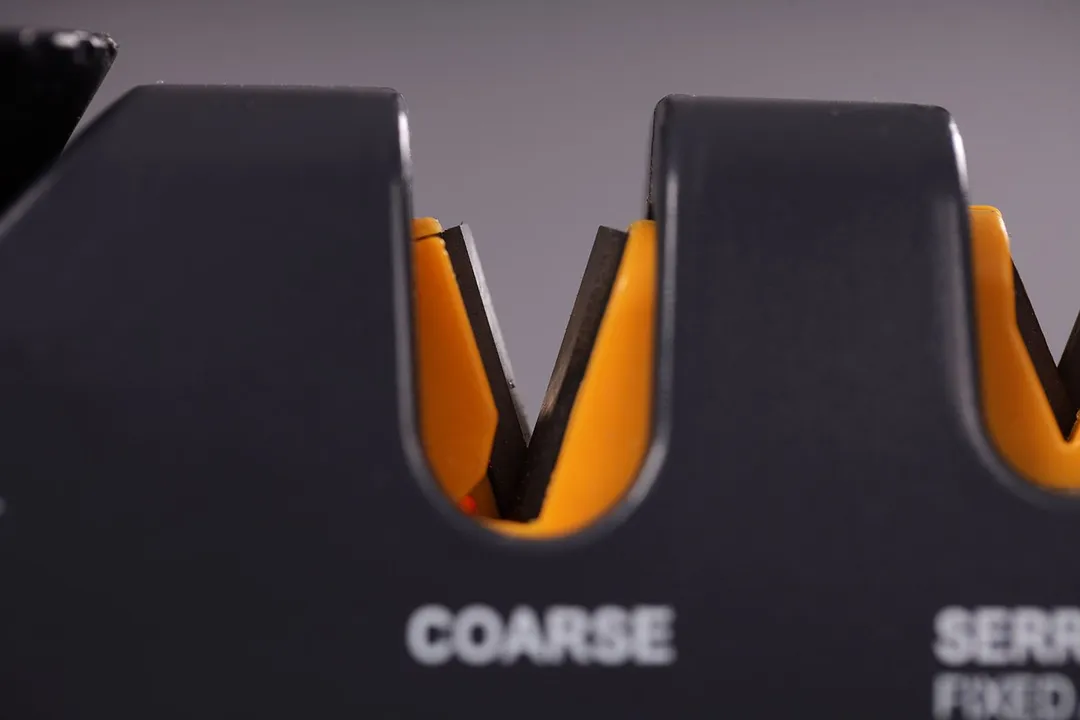
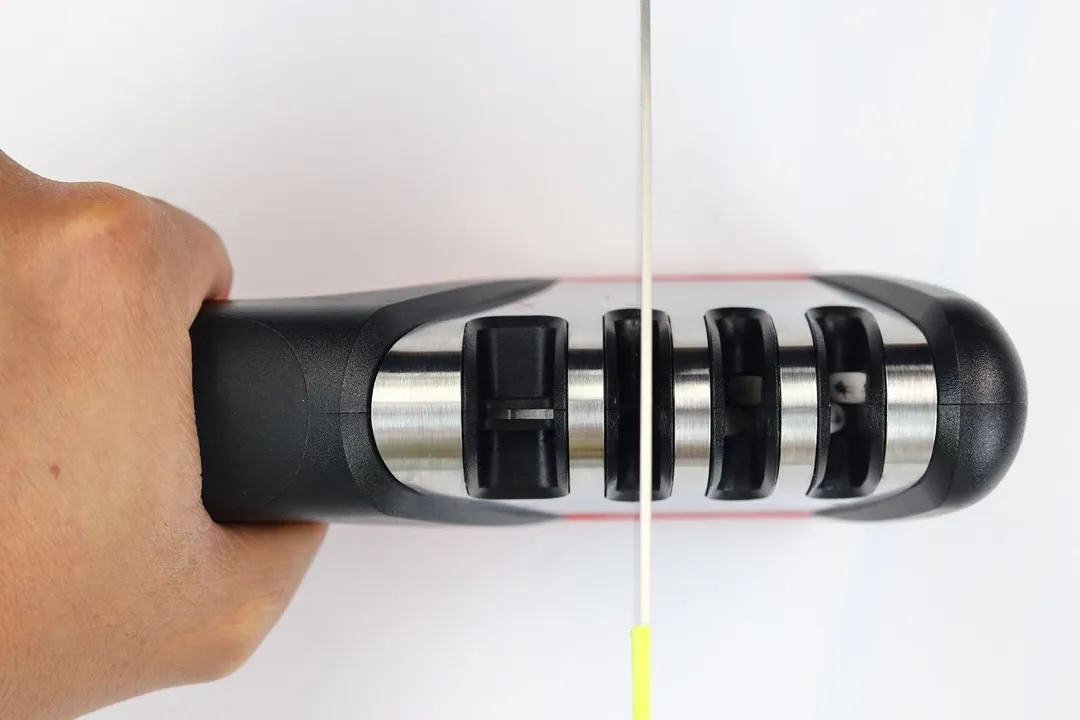
Pulling Through

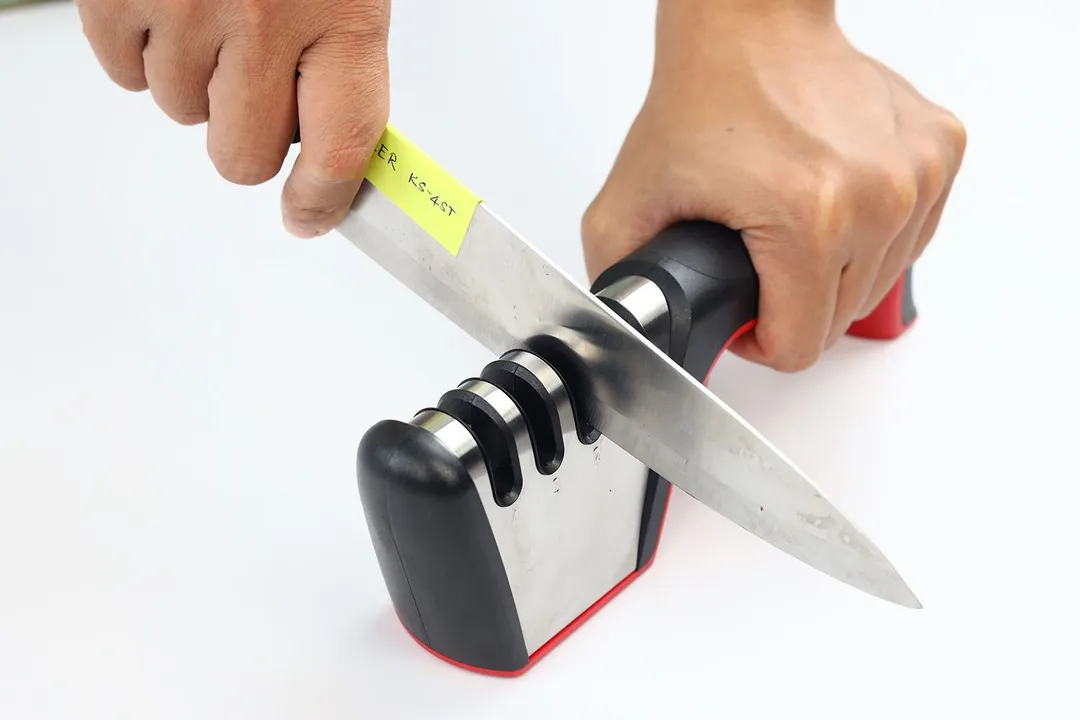
Stability on Clean Surface
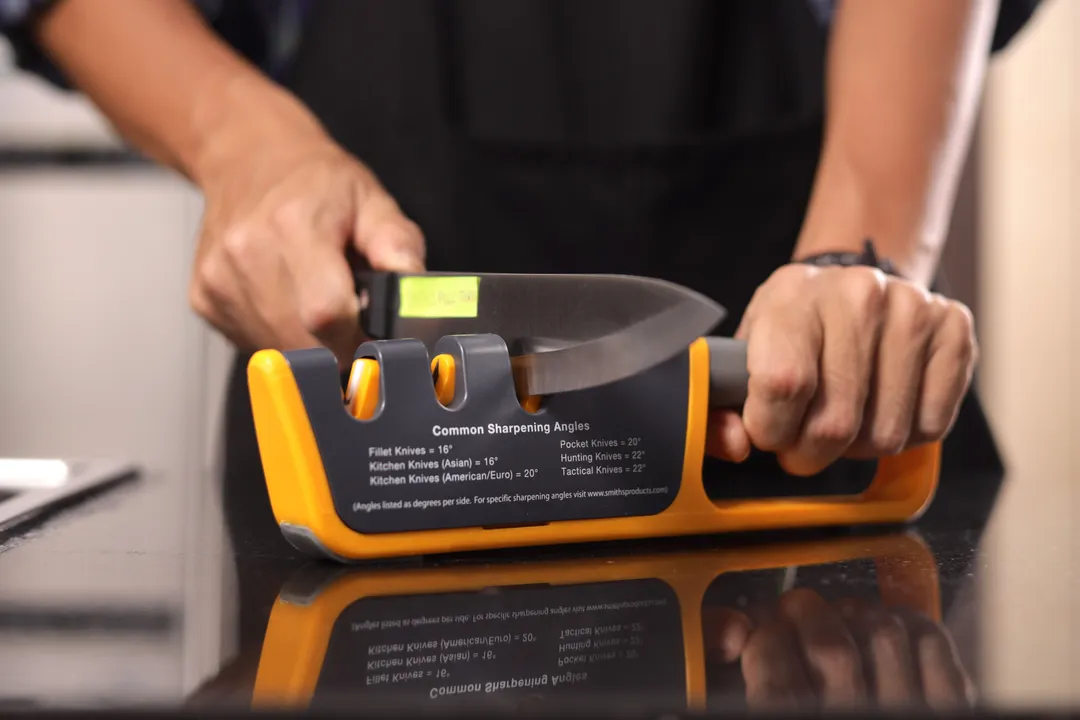
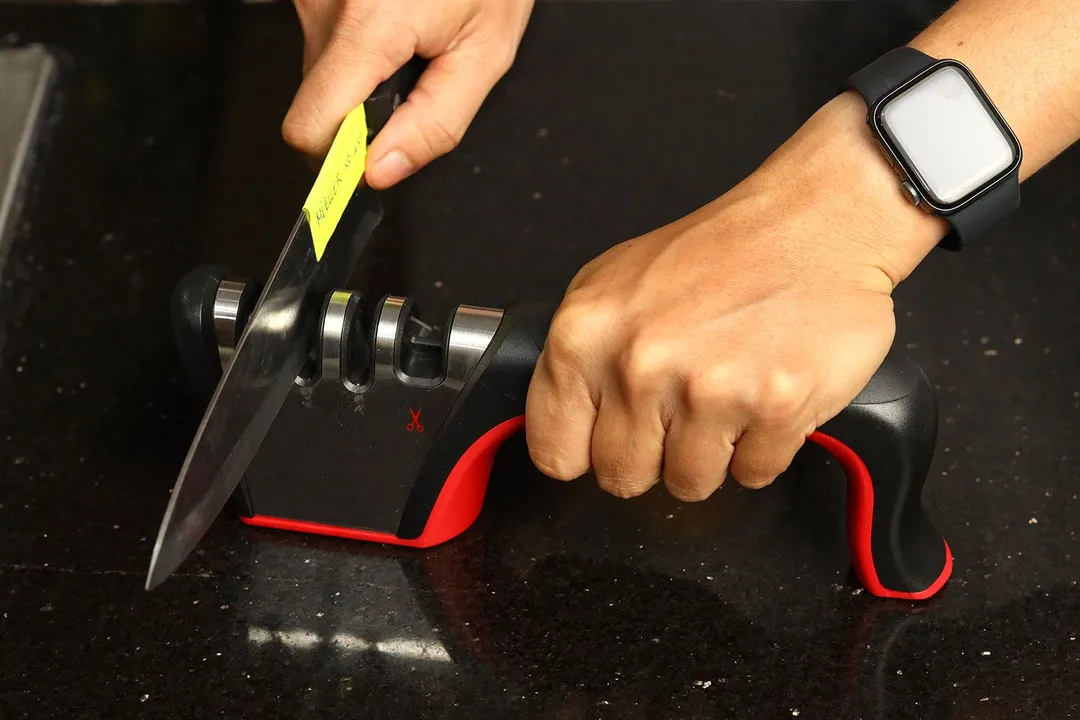
Stability on a Wet and Dirty Surface
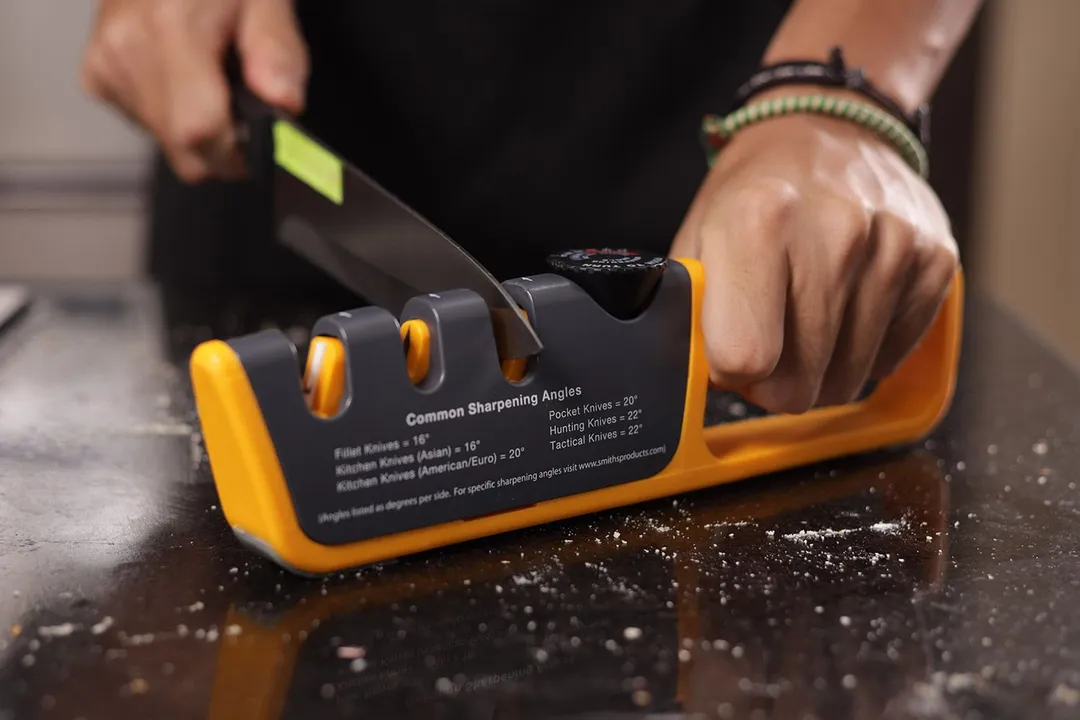

Behind the Comparison
Anh Ngo is a writer with 9 years experience at different media outlets, covering from public news and events to product testing and analysis. At HealthyKitchen101, she works across different departments, communicating closely with its network of writers, editors, and health, tech, and search engine experts to provide a meaningful and pleasant reading experience for visitors.
Lap is Head of the Research, Testing, and Review Team (RTR Team) at HealthyKitchen101.com, where he directs and supervises the testing of kitchen gadgets and appliances.
Nguyen Ntk is a graphic designer, photographer, and videographer whose philosophy centers around respecting and celebrating the beauty of reality. Through his lenses, Nguyen strives to capture the true essence of objects and events, showcasing and highlighting authentic features without distortion or exaggeration.



